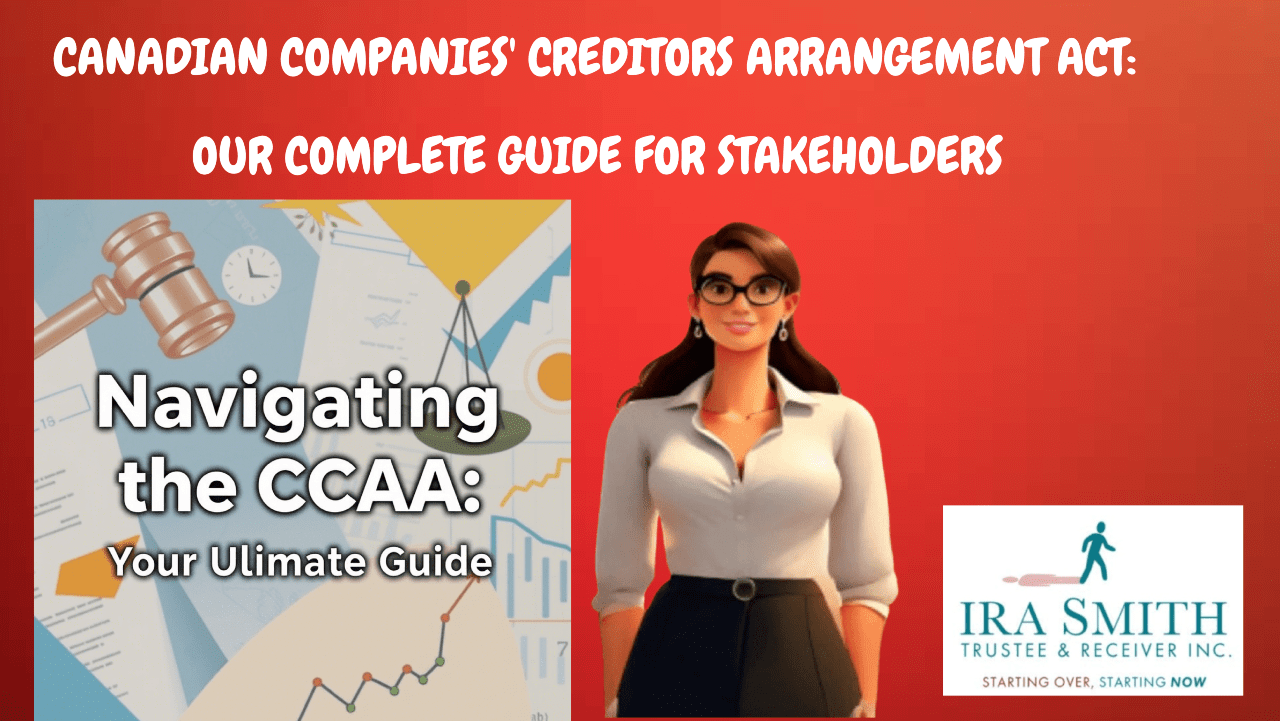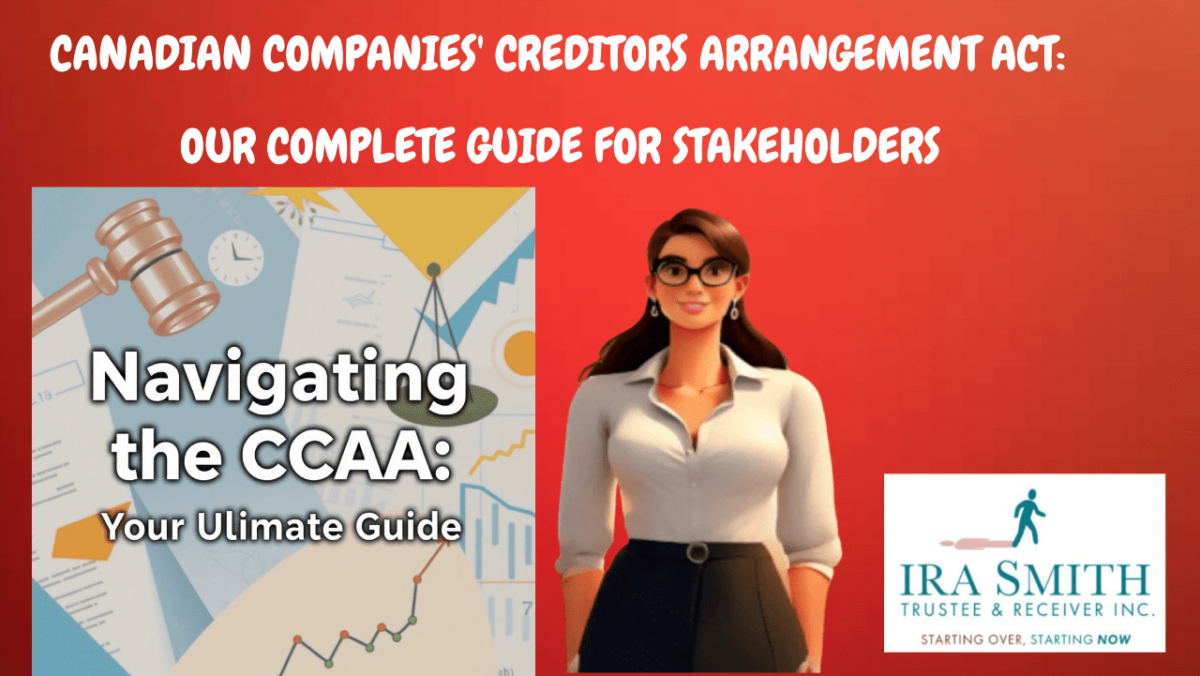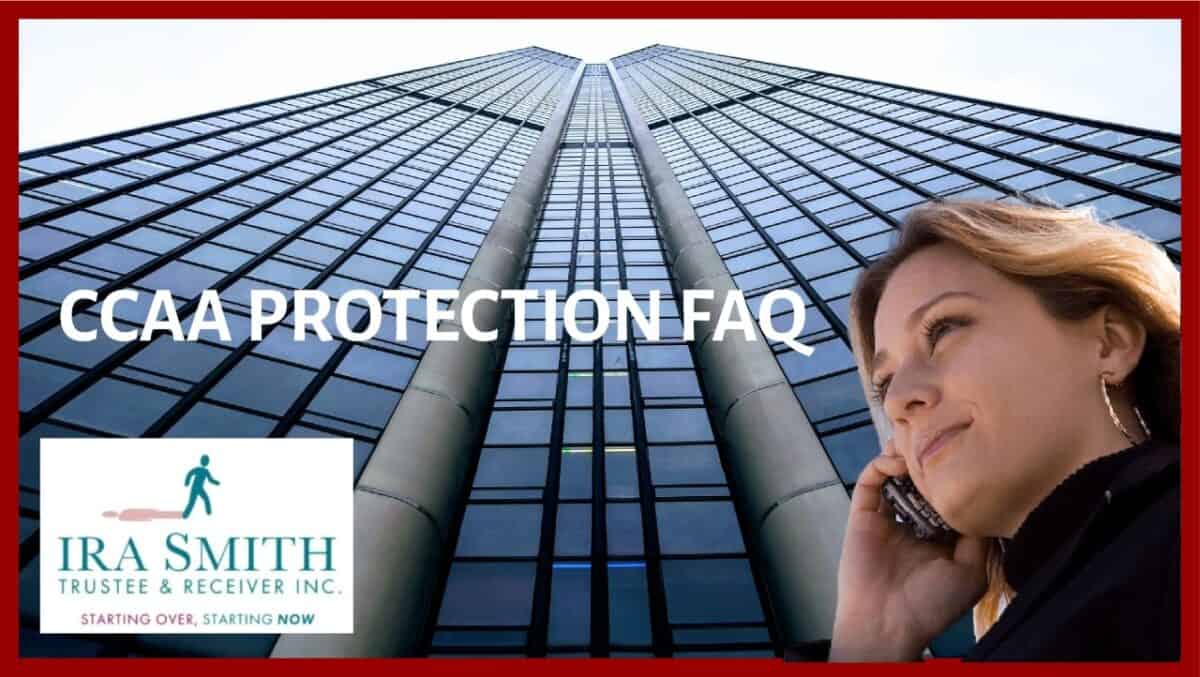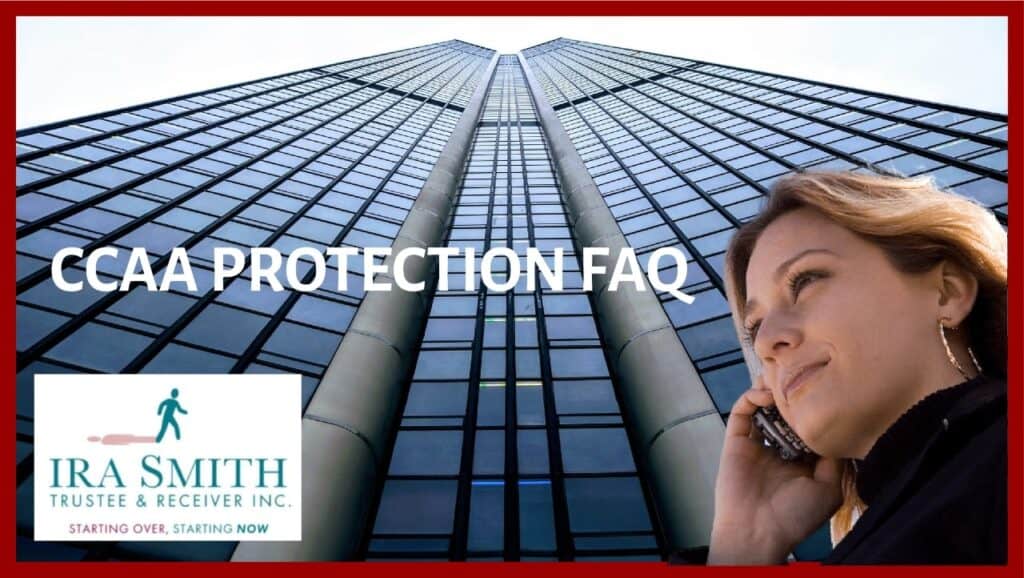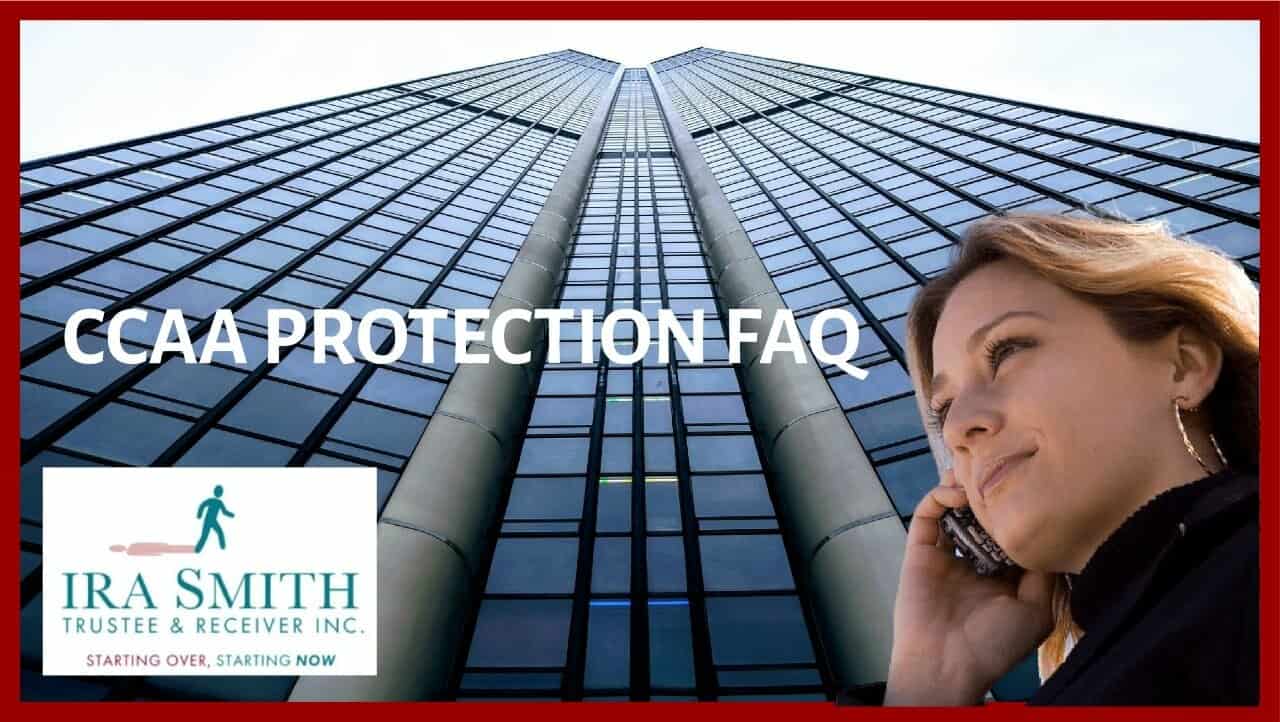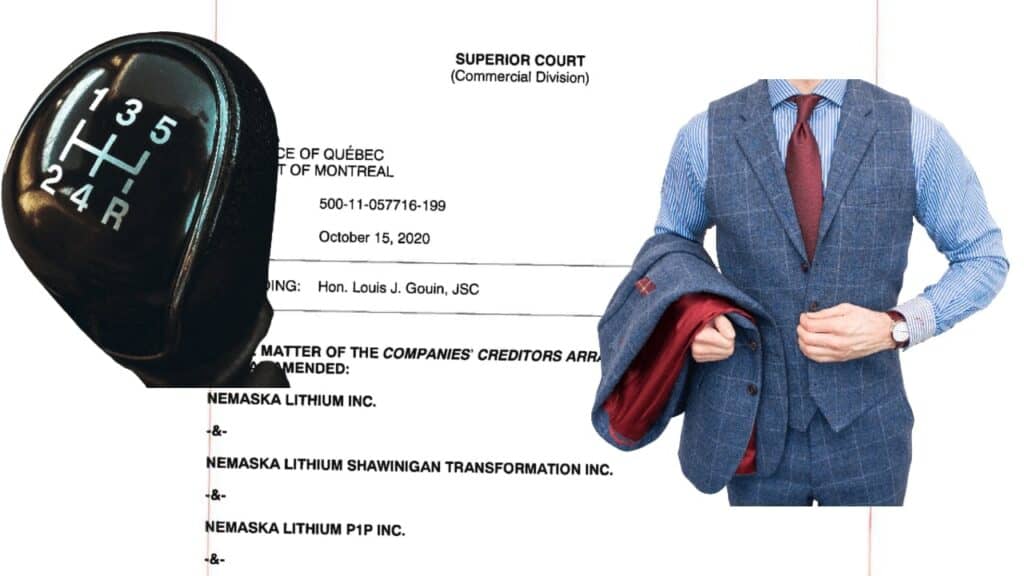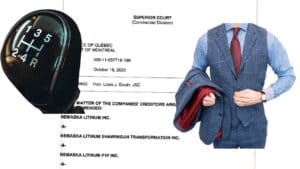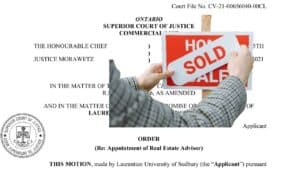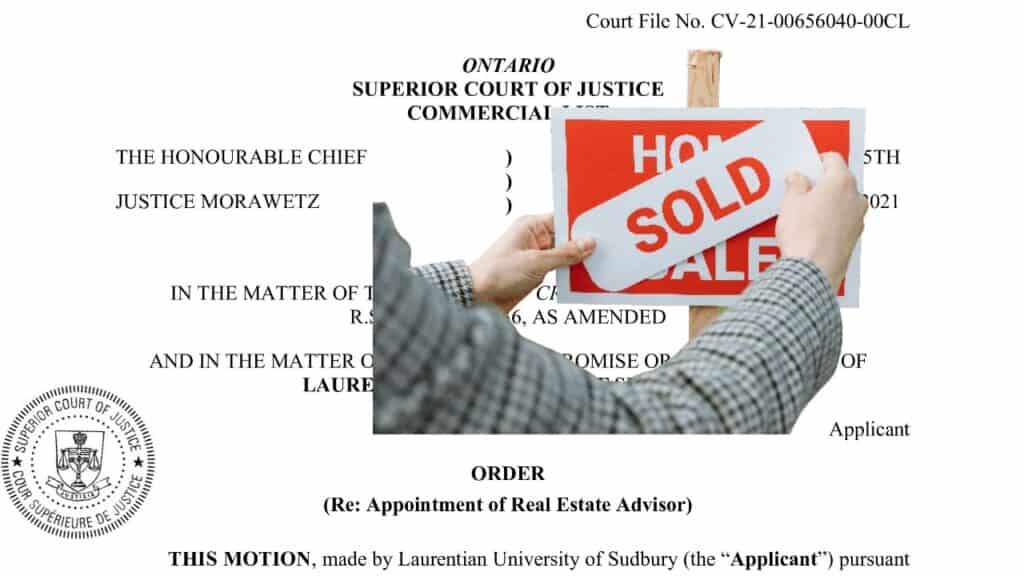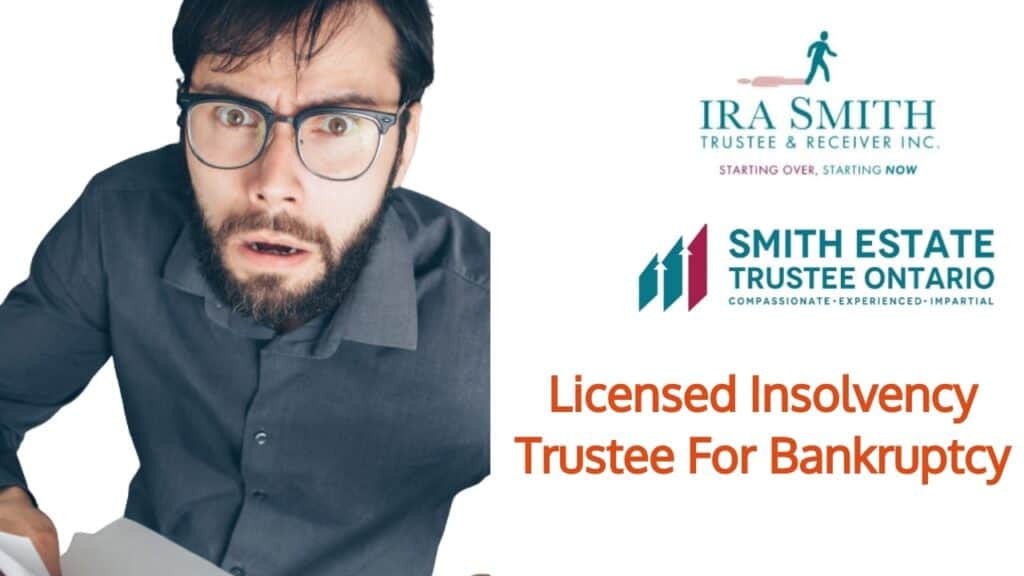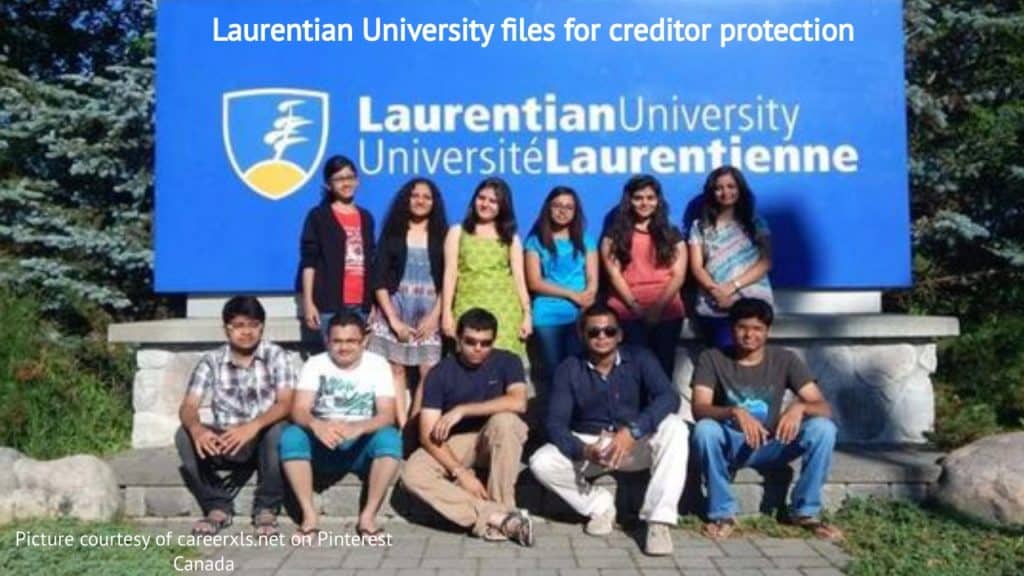Companies’ Creditors Arrangement Act Introduction
As more Canadian companies succumb to bankruptcy, it dawned on me how crucial the role of stakeholders is during these turbulent times. The Companies’ Creditors Arrangement Act (otherwise known as the CCAA) is federal legislation that provides a lifeline for struggling large businesses. Understanding what this means for us — whether we are employees, suppliers, or shareholders — can make or break our futures.
In this Brandon’s Blog post, we’ll explore the roles of various stakeholders in the CCAA process and the strategies we can employ to navigate this stormy sea of insolvent corporations.
Overview of the Companies’ Creditors Arrangement Act: An Overview Of This Lifeline For Canadian Businesses
The Companies’ Creditors Arrangement Act is a crucial piece of legislation in Canada. It serves as a lifeline for large businesses facing financial distress and unable to meet their financial obligations. But what exactly does it mean? And why is it so important? Let’s break it down.
Definition and Purpose of the Companies’ Creditors Arrangement Act
The Companies’ Creditors Arrangement Act allows a larger struggling insolvent company to restructure their debts while under legal protection. This means they can continue their operations without the immediate threat of creditors demanding payment. The primary goal is to help companies formulate a plan to repay their creditors over time. In essence, it’s about survival and recovery.
Imagine a ship caught in a storm. The Companies’ Creditors Arrangement Act is like a lifeboat for companies that owe $5 million or more, providing a safe space to regroup and chart a new course. It gives businesses the chance to stabilize and eventually thrive again.
How the Companies’ Creditors Arrangement Act Differs from Other Bankruptcy Processes
Many people confuse the Companies’ Creditors Arrangement Act with other bankruptcy processes. However, there are key differences. Here’s a quick comparison:
- Flexibility: The CCAA offers more flexibility than traditional bankruptcy proceedings under the Canadian Bankruptcy and Insolvency Act (BIA). Companies can negotiate with creditors and create a tailored plan.
- Control: Unlike a bankruptcy liquidation, where a Trustee takes control, the CCAA allows the company to maintain control of its operations during the restructuring process.
- Focus on Recovery: The CCAA emphasizes recovery and rehabilitation, rather than liquidation. This is a significant shift from other processes that may prioritize asset sales.
- Minimum Debt: As stated above, $5 million is the minimum debt level a company must have to avail itself of the bankruptcy protection provided by the Companies’ Creditors Arrangement Act. If debtor companies owe less than this minimum threshold but is still a candidate to restructure, then it would use the restructuring proceedings section of the BIA.
In short, the Companies’ Creditors Arrangement Act is designed to give businesses a fighting chance. It’s about finding solutions rather than shutting down operations.
Key Objectives of the Companies’ Creditors Arrangement Act For Canadian Businesses
So, what are the benefits of entering CCAA proceedings? Here are a few key points:
- Protection from Creditors: The CCAA provides bankruptcy protection proceedings so the insolvent company having financial diffculties can gain immediate relief from creditor actions. This allows businesses to focus on restructuring without the constant pressure of lawsuits or asset seizures.
- Time to Restructure: Companies can take the time they need to develop a viable plan called a Plan of Arrangement. This is crucial for long-term success.
- Opportunity to Recalibrate: As a legal expert once said,
“The CCAA is not just a path to resolution; it’s a way for companies to recalibrate their commitments to survive.”
This highlights the Companies’ Creditors Arrangement Act’s role in helping an insolvent company rethink its strategies and commitments.
These benefits are essential, especially in today’s economic climate. With a large increase in Canadian corporate bankruptcies in 2024, debtor companies being able to restructure under either the BIA or the Companies’ Creditors Arrangement Act is more relevant than ever.
Importance of the Companies’ Creditors Arrangement Act in the Canadian Corporate Landscape
The Companies’ Creditors Arrangement Act plays a vital role in the Canadian corporate landscape. It’s not just a legal framework; it’s a safety net for businesses. As we see more companies facing financial challenges, understanding the CCAA becomes critical. The recent trends in business bankruptcies highlight the need for effective restructuring options.
Moreover, the success rates of businesses completing the CCAA process stand at an impressive 70%. This statistic underscores the effectiveness of the CCAA in helping companies navigate financial turmoil.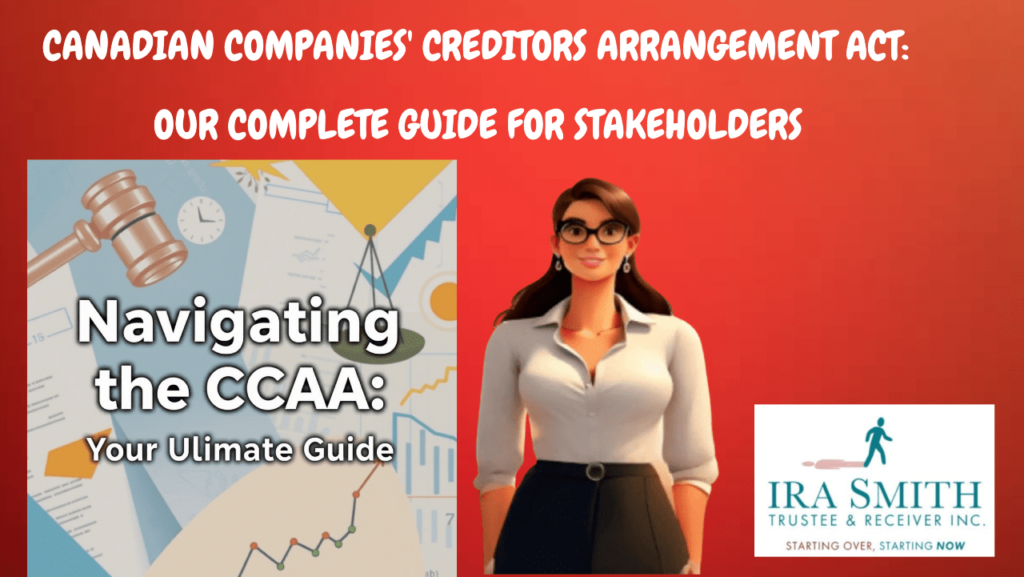
Role of Key Entities in the Companies’ Creditors Arragement Act Restructuring: The Monitor and the Office of the Superintendent of Bankruptcy
The Companies’ Creditors Arrangement Act process involves several key players, each with distinct responsibilities. This section focuses on two crucial entities: the Monitor and the Office of the Superintendent of Bankruptcy (OSB).
The Monitor’s Responsibilities: Overseeing the Process
The Monitor is a court-appointed officer who plays a central role in CCAA proceedings. They act as an independent third party, overseeing the debtor company’s restructuring efforts and ensuring fairness and transparency throughout the process. Key responsibilities of the Monitor include:
- Monitoring the Company’s Business: The Monitor closely monitors the company’s financial affairs and operations during the CCAA proceedings. This includes reviewing financial statements, attending meetings, and ensuring the company complies with court orders.
- Assisting in the Plan of Arrangement Development: While the company typically develops the Plan, the Monitor plays a vital role in reviewing, analyzing, and providing feedback on the proposed restructuring strategy. They may also facilitate negotiations between the company and its creditors.
- Reporting to the Court and Stakeholders: The Monitor regularly reports to the court on the progress of the CCAA proceedings, including the company’s financial performance, the status of the Plan of Arrangement development, and any significant events. They also keep stakeholders informed through reports and notices.
- Ensuring Compliance: The Monitor ensures that the company complies with all court orders and the provisions of the Companies’ Creditors Arrangement Act. They also help to ensure that the Plan is implemented effectively after it is sanctioned by the court.
- Acting as an Impartial Facilitator: The Monitor acts as an impartial facilitator, balancing the interests of the various stakeholders involved in the CCAA process. They strive to ensure a fair and equitable outcome for all parties.
- Providing Professional Expertise: Only licensed insolvency trustees (formerly called a trustee in bankruptcy) can be Monitors. They are experienced insolvency professionals with expertise in financial restructuring, accounting, and legal matters. They bring valuable knowledge and skills to the CCAA process.
The Role of the Office of the Superintendent of Bankruptcy: Administrative Oversight
The Office of the Superintendent of Bankruptcy (OSB) is a government agency that plays an administrative role in overseeing insolvency proceedings in Canada, including CCAA cases. While the OSB’s involvement in a specific CCAA case might not be as direct as the Monitor’s, its broader oversight is important. The OSB’s key functions related to the CCAA include:
- Supervising the Administration of Insolvency Matters: The OSB is responsible for the overall supervision of the insolvency system in Canada, including the administration of the CCAA. They ensure that CCAA proceedings are conducted in accordance with the legislation and regulations.
- Licensing Insolvency Professionals: The OSB licenses and regulates insolvency professionals, including those who act as Monitors in CCAA cases. This helps to ensure the competence and integrity of these professionals.
- Maintaining Public Records: The OSB maintains public records related to insolvency proceedings, including CCAA filings. This provides transparency and access to information for stakeholders and the public.
- Investigating Complaints: The OSB investigates complaints related to insolvency proceedings, including those involving CCAA cases. This helps to ensure accountability and address any potential misconduct.
- Providing Guidance and Information: The OSB provides guidance and information to stakeholders on insolvency matters, including the CCAA process. They publish resources and provide educational materials to help stakeholders understand their rights and responsibilities.
In summary, the Monitor is a key participant in the day-to-day management and oversight of a specific Companies’ Creditors Arrangement Act proceeding, working closely with the company and creditors. The OSB, on the other hand, plays a broader administrative role, overseeing the insolvency system as a whole and ensuring the integrity of the process, including CCAA cases, through licensing, regulation, and public record maintenance. Both entities are essential for the effective functioning of the CCAA.
Procedural Components of The Initial Application: A Formal Request for Protection
Initial Filing Process
The process begins with the company filing an initial application with the court. This application formally requests protection under the Companies’ Creditors Arrangement Act. It’s a comprehensive document that outlines the company’s financial situation, the reasons for its difficulties, and the proposed restructuring plan (or at least a preliminary outline of one). Key components typically include:
- Detailed Financial Statements: A clear picture of the company’s assets, liabilities, income, and expenses is crucial. This provides the court and creditors with a transparent view of the company’s financial health and the depth of its challenges.
- Statement of Affairs: This document provides a snapshot of the company’s current financial position, listing assets and liabilities, and identifying secured and unsecured creditors, or at least those creditors in excess of a minimum dollar value threshold.
- Reasons for Financial Distress: The application must clearly articulate the factors that led to the company’s financial difficulties. This could include market downturns, operational challenges, or unforeseen events.
- Proposed Restructuring Plan (or at least an outline of a Plan of Arrangement): While a fully formed plan is rarely available at this stage, the initial application should provide a general overview of the proposed restructuring strategy. This might include debt reduction, asset sales, operational changes or a combination of all of them.
- Appointment of a Monitor: A key aspect of the Companies’ Creditors Arrangement Act process is the appointment of a Monitor. The initial application typically nominates a proposed Monitor, an independent third party licensed insolvency trustee who will oversee the restructuring process and report to the court.
The Court’s Role: Granting the Initial Order
Once the initial application is filed, the court reviews it carefully. If the court is satisfied that the company meets the criteria for Companies’ Creditors Arrangement Act protection – namely, that it is a debtor company with debts exceeding $5 million and that it is in the best interests of the creditors to allow the company to restructure – it will grant an initial order.
This initial order is a powerful tool. It provides the company with a stay of proceedings, which temporarily prevents creditors from taking legal action to collect debts. This “breathing room” allows the company to focus on developing and implementing its restructuring plan without the immediate threat of asset seizure or bankruptcy. The initial order also formally appoints the monitor.
The Monitor’s Responsibilities: Oversight and Reporting
The Monitor plays a vital role in the Companies’ Creditors Arrangement Act process. Their responsibilities include:
- Overseeing the Company’s Operations: The Monitor ensures the company continues to operate responsibly and in accordance with the court’s orders.
- Monitoring Cash Flow: The Monitor tracks the company’s finances and reports to the court on its financial performance.
- Assisting in the Development of the Restructuring Plan: The Monitor works with the company and its stakeholders to develop a viable restructuring plan.
- Reporting to the Court and Creditors: The Monitor provides regular reports to the court and creditors on the progress of the restructuring process.
What Happens Next After The Initial Application and the issuance of the Companies’ Creditors Arrangement Act Initial Order?
The granting of the initial order marks the beginning of the formal Companies’ Creditors Arrangement Act proceedings. The debtor company, with the assistance of the Monitor, will then work to develop a detailed restructuring plan that will be presented to creditors for approval. This Plan of Arrangement will outline how the company proposes to address its debts and return to financial viability.
The initial application process under the Companies’ Creditors Arrangement Act is complex and requires careful preparation. Seeking professional advice from lawyers and financial advisors experienced in insolvency and restructuring is crucial for companies considering this option. Understanding the process is equally important for creditors seeking to protect their interests during these proceedings.
Companies’ Creditors Arrangement Act Procedural Components: Plan of Compromise or Arrangement Roadmap to Recovery
The culmination of the CCAA process is the development and implementation of a Plan of Compromise or Arrangement. Statutory requirements are that this document outlines how the company proposes to deal with its debts and restructure its business.
- Development of the Plan: The Plan is typically developed by the company, often in consultation with the Monitor and creditors. It must be fair and reasonable to all stakeholders.
- Classification of Creditors: Creditors are often classified into different groups based on the nature of their claims (e.g., secured creditors, unsecured creditors, employees). The Plan may propose different treatment for each class.
- Key Provisions of the Plan: A Plan may include a variety of provisions, such as:
- Debt repayment schedules.
- Equity conversions.
- Asset sales.
- Operational restructuring.
- Voting on the Plan: Creditors vote on the Plan at a meeting of creditors. Approval requires a majority of creditors vote in number and two-thirds in value of each class of creditors. Depending on how many classes of creditors there are and their respective interests, there could be one or more meetings of creditors by class.
- Court Approval (Sanction): Even if creditors approve the Plan, it must be sanctioned by the court. The court will review the Plan to ensure it is fair and reasonable and complies with the Companies’ Creditors Arrangement Act.
- Implementation of the Plan: Once sanctioned, the Plan becomes legally binding on all stakeholders, including those who voted against it. The company then implements the Plan, working towards its financial recovery.
This section provides a general overview of the procedural components of the CCAA. It’s crucial to remember that each CCAA case is unique, and the specific procedures and outcomes can vary significantly. Consulting with legal and financial professionals is essential for anyone involved in a CCAA proceeding.
Rights and Remedies of Stakeholders: Stakeholder Roles and Responsibilities in Companies’ Creditors Arrangement Act Proceedings
When a large insolvent company faces financial distress, it often turns to the Companies’ Creditors Arrangement Act for protection. This process can be complex, and various stakeholders play crucial roles. Understanding these roles is essential for navigating the CCAA landscape effectively. Let’s break down the responsibilities of board members, employees, and lenders.
1. Board Members Rights: Navigating Fiduciary Duties
Board members hold a significant responsibility during CCAA proceedings. They must navigate their fiduciary duties carefully. But what does this mean? In simple terms, fiduciary duties require board members to act in the best interest of the company and its creditors, both secured creditors and unsecured creditors, when the company is in the “zone of insolvency.” This is a critical point where their obligations shift from shareholders to creditors.
As a board member, if you find yourself in this situation, it’s vital for the Board of Directors to retain legal counsel early on before the commencement of proceedings. There is a significant gap in understanding the legal landscape. Why risk your position when you can have expert insolvency lawyer guidance?
In this zone, board members must prioritize transparency and accountability. They should regularly communicate with stakeholders to keep everyone informed about the company’s status. After all, a well-informed board can make better decisions.
2. Employee Rights: Importance of Communication
Employees are often the backbone of a company. During CCAA proceedings, they can feel anxious and uncertain. That’s why effective communication is crucial. Employees need to understand what’s happening within the company. Unfortunately, a staggering 75% of employees reported being uninformed about ongoing CCAA cases. This lack of information can lead to rumors and fear.
So, how can companies improve communication? Establishing clear channels is essential. Regular updates through internal memos, meetings, or dedicated websites can help keep employees in the loop. Remember,
“In times of crisis, clear communication is a stakeholder’s best tool.” – Crisis Management Consultant
Employees should also feel empowered to ask questions. They should know where to find information and whom to approach for clarity. This proactive approach can foster a more supportive environment during tough times.
3. Lender’s Rights: Minimizing Risks During Restructuring
Lenders play a pivotal role in CCAA proceedings. They need to minimize risks while navigating the restructuring process. First and foremost, retaining legal counsel is crucial. Lenders should stay updated on the case’s status and participate actively in discussions. This ensures they are aware of any developments that may impact their interests.
Best practices for lenders include:
- Regularly reviewing case updates.
- Filling out necessary forms to confirm their participation.
- Engaging with legal experts to understand their rights and obligations.
By taking these steps, lenders can protect their investments and potentially recover more during the restructuring process. It’s all about being proactive and informed.
4. Unsecured Creditors’ Rights: Minimizing Risks During Restructuring While Enforcing The Rights of Creditors
Unsecured creditors, such as suppliers, are those who do not have a specific security interest in the company’s assets. As an unsecured creditor in a restructuring process, it is important to stay informed on the status of the case. Suppliers should ensure their accounting is accurate and that they understand their terms and what is outstanding. To protect their interests, unsecured creditors should take the following steps:
- Ensure accurate accounting: Suppliers should ensure their accounting is accurate and understand their terms and what is outstanding. Landlords should ensure accurate accounting and confirm the debtor’s financial position regarding the lease, including whether the tenant is current or behind on rent.
- Stay informed: Unsecured creditors should stay informed on the case’s status through external communications, including, a case-specific website created by the licensed insolvency trustee acting as the Monitor in the Companies’ Creditors Arrangement Act proceedings.
- Communicate with the company: Suppliers should communicate with their contact person at the business regarding the status of payment and how they will be treated not only on the debt they are owed as at the filing date, but how payment will be made for orders after the commencement of the Companies’ Creditors Arrangement Act proceedings.
- Retain insolvency legal counsel: In more complex situations, suppliers can benefit from hiring legal counsel to advise on the best strategy to protect their interests. Active lenders embroiled in a CCAA case almost always want to retain counsel to advise them throughout the process. Landlords should retain counsel to be responsive to court documents and otherwise tend to the landlord’s interest in the case. Insolvency counsel will be vigilant in ensuring the rights of creditors are respected.
- Court-appointed Monitor case developments: Landlords need to stay updated on case developments since many debtor businesses often choose to resiliate or “reject” real estate leases that would prevent a successful restructuring.
5. Shareholders Rights: You Are An Owner
Shareholders in a company undergoing CCAA proceedings need to stay informed of the situation and follow case developments to ensure they participate appropriately in the process.
Shareholders are last in line in the order of priority to be repaid for their claim in a bankruptcy, so they usually recover very little, if anything, on their claim. However, shareholders do occasionally recover money in a CCAA case, and failure to remain current and file appropriate documents can result in being ineligible for any recovery as a shareholder
Creating Your Bankruptcy Playbook: Proactive Measures for Creditors
Bankruptcy can feel like a storm. It’s chaotic, unpredictable, and often leaves creditors scrambling for safety. But what if I told you that there are proactive measures you can take to navigate these turbulent waters? By creating a bankruptcy playbook, you can affirm your interests and improve your chances of recovery. Let’s dive into the essential steps you should consider.
How Legal Counsel Can Provide Leverage
Having legal counsel by your side can be a game-changer. Here’s how:
- Expert Guidance: Legal professionals understand the intricacies of bankruptcy law. They can help you navigate the complexities and ensure that your interests are protected.
- Negotiation Power: A lawyer can negotiate on your behalf. This can lead to better outcomes, whether it’s securing payments or renegotiating terms.
- Timely Action: Legal counsel can help you file necessary documents promptly, ensuring you don’t miss out on potential recoveries.
Statistics show that 90% of creditors who actively engaged legal counsel in CCAA cases recovered more of their investments than those who did not. This is a clear indication of the value that legal representation brings.
Examples of Successful Creditor Strategies
Learning from others can provide valuable insights. Here are some strategies that have proven effective in past CCAA cases:
- Supplier Communication: Suppliers who maintained open lines of communication with the debtor often fared better. They were able to negotiate payment plans or secure priority status for their claims.
- Active Participation: Creditors who participated actively in meetings and discussions had a better understanding of the proceedings. This allowed them to advocate effectively for their interests.
- Document Everything: Keeping meticulous records of all transactions and communications helped creditors substantiate their claims. This was particularly important in cases where disputes arose.
These strategies highlight the importance of being proactive. If you wait for things to unfold, you might find yourself at a disadvantage.
The Risks of Inactivity During Bankruptcy Proceedings
Inactivity can be a creditor’s worst enemy. The risks are significant:
- Loss of Recovery: If you don’t engage, you may miss out on recovering any of your claims. On average, creditors recovered only 30% of their claims when they were involved from the outset.
- Unfavourable Terms: Without active participation, you may be subjected to unfavorable terms that could further jeopardize your financial interests.
- Missed Opportunities: Opportunities to negotiate or influence the outcome may pass you by if you remain passive.
In a insolvency scenario, every moment counts. The sooner you act, the better your chances of recovery.
Frequently Asked Questions about the Companies’ Creditors Arrangement Act
Navigating the Companies’ Creditors Arrangement Act can be complex. Here are some frequently asked questions to help you better understand this legislation:
1. What is the CCAA and when is it used?
The CCAA is a federal law in Canada that allows eligible companies facing financial difficulties to restructure their debts and operations with the protection of the court. It’s typically used by large companies with significant debt (at least $5 million) to avoid bankruptcy and preserve jobs. It provides a formal process for developing a plan of compromise or arrangement with creditors.
2. Who is eligible to file for CCAA protection?
A company is eligible to file under the Companies’ Creditors Arrangement Act if it:
- Is a debtor company (incorporated under the laws of Canada or a debtor company to which the Winding-up and Restructuring Act applies).
- Owes at least $5 million to its creditors.
3. What is a “stay of proceedings” and why is it important?
A stay of proceedings is a court order that temporarily suspends most legal actions by creditors against the company. This includes lawsuits, foreclosures, and repossessions. It’s crucial because it gives the company breathing room to stabilize its business and develop a restructuring plan without the immediate threat of creditor actions.
4. What is a Plan of Compromise or Plan of Arrangement?
The Plan of Compromise or Plan of Arrangement is the core of the CCAA process. It’s a document that outlines how the company proposes to deal with its debts and restructure its business. It typically includes details on debt repayment, asset sales, equity conversions, and other measures.
5. How is a CCAA plan approved?
Creditors vote on the Plan. Approval usually requires a majority in number and two-thirds in value of each class of creditors. Even if creditors approve, the plan must be sanctioned (approved) by the court to become legally binding.
6. What is the role of the Monitor in a CCAA proceeding?
The Monitor is a court-appointed officer who oversees the CCAA process. They monitor the company’s finances and operations, assist in the development of the Plan, report to the court and stakeholders, and ensure compliance with court orders. They act as an impartial facilitator.
7. How does the CCAA differ from bankruptcy?
The CCAA is a restructuring process aimed at avoiding bankruptcy. It allows a company to continue operating while it works to resolve its financial problems. Bankruptcy, on the other hand, is a formal legal process where a company’s assets are liquidated to pay creditors.
8. What happens to shareholders in a CCAA process?
Shareholders are often affected by a CCAA restructuring. Their existing shares may be diluted or cancelled, and they may receive new shares in the restructured company. The specifics depend on the terms of the Plan.
9. How long does the CCAA process typically take?
The length of a CCAA process can vary significantly depending on the complexity of the case. It can take anywhere from a few months to several years.
10. Where can I find more information about the CCAA?
You can find more information about the Companies’ Creditors Arrangement Act on the website of the OSB which is the government agency responsible for overseeing insolvency proceedings in Canada. Consulting with a lawyer specializing in insolvency law is also highly recommended.
11. What is the difference between secured and unsecured creditors in a CCAA?
- Secured creditors have a security interest in specific assets of the company (e.g., a mortgage on a building). Their claims are secured by these assets.
- Unsecured creditors do not have a security interest. Their claims are not tied to any specific asset. They typically receive a lower recovery than secured creditors in a restructuring.
12. Can a CCAA plan affect employees?
Yes, a CCAA plan can affect employees. It may involve workforce reductions, changes to compensation and benefits, or modifications to collective bargaining agreements. Employee claims for wages owed are often given priority in a CCAA proceeding.
This FAQ provides a general overview of the CCAA. It’s essential to remember that each CCAA case is unique, and the specifics can vary significantly. Consulting with legal and financial professionals is crucial for anyone involved in a CCAA proceeding.
Companies’ Creditors Arrangement Act Conclusion
Building a strategy early in the Companies’ Creditors Arrangement Act process can significantly impact recovery outcomes for all types of creditors involved. By affirming your interests, engaging legal counsel, and learning from successful strategies, you can create a robust bankruptcy playbook. Don’t let the storm of bankruptcy catch you off guard. Take proactive measures now, and you may find yourself on the path to recovery.
I hope you enjoyed this Companies’ Creditors Arrangement Act Brandon’s Blog. Do you or your company have too much debt? Are you or your company in need of financial restructuring? The financial restructuring process is complex. The Ira Smith Team understands how to do a complex restructuring. However, more importantly, we understand the needs of the entrepreneur or someone with too much personal debt.
You are worried because you are facing significant financial challenges. It is not your fault that you are in this situation. You have been only shown the old ways that do not work anymore. The Ira Smith Team uses new modern debt relief options to get you out of your debt troubles while avoiding the bankruptcy process. We can get you debt relief freedom using processes that are a bankruptcy alternative.
The stress placed upon you is huge. We understand your pain points. We look at your entire situation and devise a strategy that is as unique as you and your problems; financial and emotional. The way we take the load off of your shoulders and devise a plan, we know that we can help you.
We know that people facing financial problems need a realistic lifeline. There is no “one solution fits all” approach with the Ira Smith Team.
That is why we can develop a restructuring process as unique as the financial problems and pain you are facing. If any of this sounds familiar to you and you are serious about finding a solution, contact the Ira Smith Trustee & Receiver Inc. team today.
Call us now for a free consultation. We will get you or your company back on the road to healthy stress-free operations and recover from the pain points in your life, Starting Over, Starting Now.
The information provided in this Brandon’s Blog is intended for educational purposes only. It is not intended to constitute legal, financial, or professional advice. Readers are encouraged to seek professional advice regarding their specific situations. The content of this Brandon’s Blog should not be relied upon as a substitute for professional guidance or consultation. The author, Ira Smith Trustee & Receiver Inc. as well as any contributors to this Brandon’s Blog, do not assume any liability for any loss or damage.